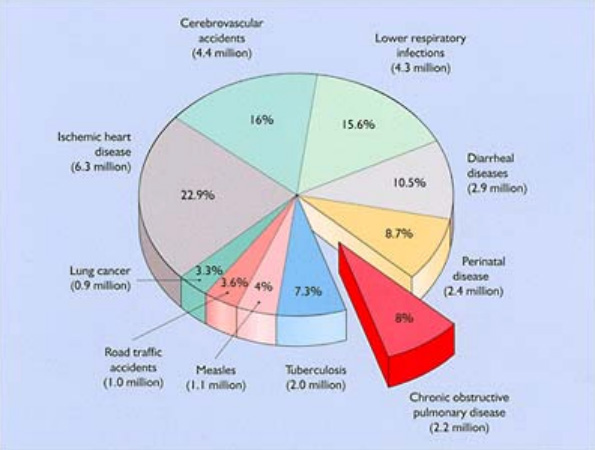Indoor and outdoor pollutants and allergens
Charles S. Barnes
Pollution is a normal result of human activity. It is the unwanted introduction of something into the environment that causes harm. In a comparative risk assessment of the global burden of disease, both ambient air pollution and indoor air pollution were among the most significant factors. The interests of health are constantly colliding with the interests of economic development, which further confound issues related to air quality. Regardless of one’s perspective, having an essential understanding of the impact of environmental determinants on respiratory conditions such as asthma and COPD is necessary for effective management of these patients.
Cellular Mechanisms behind Particulate Matter Air Pollution– Related Health Effects
Ernesto Alfaro-Moreno, Claudia García-Cuellar, Andrea De-Vizcaya-Ruiz, Leonora Rojas-Bracho
Adverse health conditions and diseases affecting the respiratory and cardiovascular systems of vulnerable populations, such as children, the elderly, and those with preexisting cardiopulmonary illnesses, represent the main health concerns related to air pollution. Included among these health endpoints are increased cardiopulmonary mortality, asthma exacerbation, chronic obstructive pulmonary disease (COPD), decreased heart rate variability,
The Effects of Air Pollution and Temperature on COPD
Published in COPD: Journal of Chronic Obstructive Pulmonary Disease
Chronic Obstructive Pulmonary Disease (COPD) affects 12–16 million people in the United States and is the third-leading cause of death. In developed countries, smoking is the greatest risk factor for the development of COPD, but other exposures also contribute to the development and progression of the disease. Several studies suggest, though are not definitive, that outdoor air pollution exposure is linked to the prevalence and incidence of COPD. Among individuals with COPD, outdoor air pollutants are associated with loss of lung function and increased respiratory symptoms. In addition, outdoor air pollutants are also associated with COPD exacerbations and mortality.
The effect of environmental factors on the differential expression of miRNAs in patients with chronic obstructive pulmonary disease: a pilot clinical study
Published in International Journal of Chronic Obstructive Pulmonary Disease » Volume 13
Liu PF, Yan P, Zhao DH, Shi WF, Meng S, Liu Y, Liu B, Li GF, Xie LX
COPD is a common chronic disease of the respiratory system, which is characterized by airflow obstruction caused by small airway disease (bronchiolitis obliterans) and destruction of lung parenchyma (emphysema). With increases in air pollution, smoking and age, the incidence and mortality of COPD have increased significantly. Acute exacerbation of COPD can lead to a decrease in the quality of life of patients, a decline in lung function and an increased risk of death.
Air Pollution and Allergic Rhinitis: Role in Symptom Exacerbation and Strategies for Management
Published in Journal of Asthma and Allergy
This article reviews the current understanding of the role of air pollution in both the symptom exacerbation and rising prevalence of allergic rhinitis (AR) for the development of future AR therapeutics and management strategies. We discuss the epidemiological evidence for this relationship through birth cohort studies, the economic impact of AR, and the influence of air pollution through the lens of the exposome framework of allergic disease development. This is followed by a discussion on the influence of diesel exhaust and diesel exhaust particles (DEP) from motor vehicle emissions and their implication in the rising prevalence of allergic disease and allergic sensitization through triggering inflammatory signalling pathways that exacerbate AR symptoms.
 China
China  Africa
Africa 

